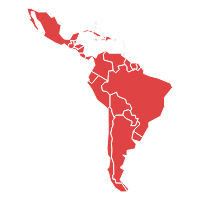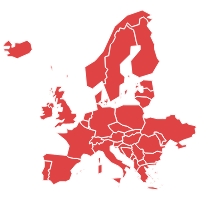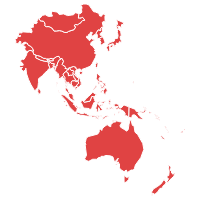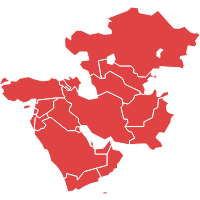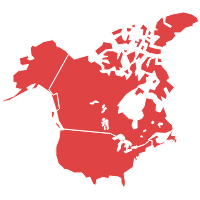-
Alcohols
-
Organic Acids
-
Ketones
-
Platform Chemicals
-
Biopolymers
-
Others
Renewable Chemicals Market size was valued at USD 49.1 Billion in 2022 and is anticipated to grow at USD 84.4 Billion till 2029 recording a CAGR of 11.48% from 2023-2029. Renewable Chemical Market bio-based chemicals comprise a variety of chemicals that are obtained from renewable sources such as agricultural feedstock, agricultural waste, organic waste products, biomass, and microorganisms. Renewable chemicals are considered as sustainable source of carbon as it offer fewer carbon footprints in comparison to conventional petro-based chemicals. Some of the most commonly found renewable chemicals include polymeric (lignin, hemicellulose, cellulose, starch, protein) and monomeric (carbohydrates, oils, plant extractives, amino acids) components. These chemicals are used widely as a direct substitution for conventional petrochemicals.
Renewable Chemicals Market Key Developments:
- In October 20, 2015, SGBio, a joint venture between the Solvay Group and GranBio, has acquired assets from Cobalt including the bank of microorganisms and intellectual property.
Renewable Chemical Market Summary
Study Period
2024-2030
Base Year
2023
CAGR
11.48%
Largest Market
North America
Fastest Growing Market
Europe
Renewable Chemicals Market Dynamics
Global trend towards oil independency, increasing awareness towards reduction of carbon foot prints in order to cope with situation such as landfills and global warming, and increasing consumer preferences towards green and natural product is driving the market for renewable chemicals. Moreover limiting petroleum resources, political instability of major oil producing countries and continuous fluctuation in price of petroleum product has helped in overall popularity and acceptance of renewable chemicals around the globe. However, due to the rising concern of policymakers over food security and deforestation has restrained the growth of the renewable global chemical market.
Renewable Chemical Market Segmentation
By Product Type
By Feedstock
- Corn
- Sugarcane
- Biomass
- Algae
- Others
By Application
- Petrochemical
- Textiles
- Food & Beverage Automotive
- Chemical
- Agricultural
- Bio-Medical
- Others
Frequently Asked Questions
The renewable chemicals market size was valued at USD 49.1 Billion in 2022.
The report covers the five regions and 15+ countries market data: North America (United States, Canada), Europe (Germany, France, Italy, Spain, and United Kingdom (UK), Asia Pacific (China, India, Japan, Australia & New Zealand), Latin America (Brazil, Mexico, Argentina) and Middle East and Africa (Saudi Arabia, United Arab Emirates, South Africa).
In our report, we provide 12-15 market players’ information into the report. However, based on the client’s request we will provide additional country and regional market players information as well.
Key Features of the Reports
- The renewable chemicals market report provides granular level information about the market size, regional market share, historic market (2018 to 2022) and forecast (2023 to 2029)
- The report covers in-detail insights about the competitors overview, company share analysis, key market developments, and their key strategies
- The report outlines drivers, restraints, unmet needs, and trends that are currently affecting the market
- The report tracks recent innovations, key developments and startup’s details that are actively working in the market
- The report provides plethora of information about market entry strategies, regulatory framework and reimbursement scenario
- The report analyses the impact of socio-political environment through PESTLE Analysis and competition through Porter’s Five Force Analysis in addition to recent technology advancements and innovations in the market

| 1. Executive Summary |
| 2. Global Renewable Chemicals Market Introduction |
| 2.1. Global Renewable Chemicals Market - Taxonomy |
| 2.2. Global Renewable Chemicals Market -Definitions |
| 2.2.1. Product Type |
| 2.2.2. By Feedstock |
| 2.2.3. Applications |
| 2.2.4. By Region |
| 3. Global Renewable Chemicals Market Dynamics |
| 3.1. Drivers |
| 3.2. Restraints |
| 3.3. Opportunities/Unmet Needs of the Market |
| 3.4. Trends |
| 3.5. Global Renewable Chemicals Market Dynamic Factors - Impact Analysis |
| 3.6. Global Renewable Chemicals Market - Competition Landscape |
| 4. Global Renewable Chemicals Market Analysis, 2018-2022 and Forecast, 2023-2029 |
| 4.1. Market Analysis, 2018-2022 and Forecast, 2023-2029 (Revenue, USD Mn) |
| 4.2. Year-over-Year (Y-o-Y) Growth Analysis (%) |
| 4.3. Market Opportunity Analysis |
| 5. Global Renewable Chemicals Market, Product Type, 2017-2021 and Forecast, 2023-2029 (Revenue, USD Mn) |
| 5.1. Alcohols |
| 5.1.1. Market Analysis, 2017-2021 and Forecast, 2023-2029 (Revenue, USD Mn) |
| 5.1.2. Year-over-Year (Y-o-Y) Growth Analysis (%) and Market Share Analysis (%) |
| 5.1.3. Market Opportunity Analysis |
| 5.2. Organic Acids |
| 5.2.1. Market Analysis, 2017-2021 and Forecast, 2023-2029 (Revenue, USD Mn) |
| 5.2.2. Year-over-Year (Y-o-Y) Growth Analysis (%) and Market Share Analysis (%) |
| 5.2.3. Market Opportunity Analysis |
| 5.3. Ketones |
| 5.3.1. Market Analysis, 2017-2021 and Forecast, 2023-2029 (Revenue, USD Mn) |
| 5.3.2. Year-over-Year (Y-o-Y) Growth Analysis (%) and Market Share Analysis (%) |
| 5.3.3. Market Opportunity Analysis |
| 5.4. Platform Chemicals |
| 5.4.1. Market Analysis, 2017-2021 and Forecast, 2023-2029 (Revenue, USD Mn) |
| 5.4.2. Year-over-Year (Y-o-Y) Growth Analysis (%) and Market Share Analysis (%) |
| 5.4.3. Market Opportunity Analysis |
| 5.5. Biopolymers |
| 5.5.1. Market Analysis, 2017-2021 and Forecast, 2023-2029 (Revenue, USD Mn) |
| 5.5.2. Year-over-Year (Y-o-Y) Growth Analysis (%) and Market Share Analysis (%) |
| 5.5.3. Market Opportunity Analysis |
| 5.6. Others |
| 5.6.1. Market Analysis, 2017-2021 and Forecast, 2023-2029 (Revenue, USD Mn) |
| 5.6.2. Year-over-Year (Y-o-Y) Growth Analysis (%) and Market Share Analysis (%) |
| 5.6.3. Market Opportunity Analysis |
| 6. Global Renewable Chemicals Market Forecast, By Feedstock, 2017-2021 and Forecast, 2021 - 2027 (Revenue, USD Mn) |
| 6.1. Corn |
| 6.1.1. Market Analysis, 2017-2021 and Forecast, 2023-2029 (Revenue, USD Mn) |
| 6.1.2. Year-over-Year (Y-o-Y) Growth Analysis (%) and Market Share Analysis (%) |
| 6.1.3. Market Opportunity Analysis |
| 6.2. Sugarcane |
| 6.2.1. Market Analysis, 2017-2021 and Forecast, 2023-2029 (Revenue, USD Mn) |
| 6.2.2. Year-over-Year (Y-o-Y) Growth Analysis (%) and Market Share Analysis (%) |
| 6.2.3. Market Opportunity Analysis |
| 6.3. Biomass |
| 6.3.1. Market Analysis, 2017-2021 and Forecast, 2023-2029 (Revenue, USD Mn) |
| 6.3.2. Year-over-Year (Y-o-Y) Growth Analysis (%) and Market Share Analysis (%) |
| 6.3.3. Market Opportunity Analysis |
| 6.4. Algae |
| 6.4.1. Market Analysis, 2017-2021 and Forecast, 2023-2029 (Revenue, USD Mn) |
| 6.4.2. Year-over-Year (Y-o-Y) Growth Analysis (%) and Market Share Analysis (%) |
| 6.4.3. Market Opportunity Analysis |
| 6.5. Others |
| 6.5.1. Market Analysis, 2017-2021 and Forecast, 2023-2029 (Revenue, USD Mn) |
| 6.5.2. Year-over-Year (Y-o-Y) Growth Analysis (%) and Market Share Analysis (%) |
| 6.5.3. Market Opportunity Analysis |
| 7. Global Renewable Chemicals Market, By Applications, 2017-2021 and Forecast, 2023-2029 (Revenue, USD Mn) |
| 7.1. Petrochemical |
| 7.1.1. Market Analysis, 2017-2021 and Forecast, 2023-2029 (Revenue, USD Mn) |
| 7.1.2. Year-over-Year (Y-o-Y) Growth Analysis (%) and Market Share Analysis (%) |
| 7.1.3. Market Opportunity Analysis |
| 7.2. Textiles |
| 7.2.1. Market Analysis, 2017-2021 and Forecast, 2023-2029 (Revenue, USD Mn) |
| 7.2.2. Year-over-Year (Y-o-Y) Growth Analysis (%) and Market Share Analysis (%) |
| 7.2.3. Market Opportunity Analysis |
| 7.3. Food & Beverage |
| 7.3.1. Market Analysis, 2017-2021 and Forecast, 2023-2029 (Revenue, USD Mn) |
| 7.3.2. Year-over-Year (Y-o-Y) Growth Analysis (%) and Market Share Analysis (%) |
| 7.3.3. Market Opportunity Analysis |
| 7.4. Automotive |
| 7.4.1. Market Analysis, 2017-2021 and Forecast, 2023-2029 (Revenue, USD Mn) |
| 7.4.2. Year-over-Year (Y-o-Y) Growth Analysis (%) and Market Share Analysis (%) |
| 7.4.3. Market Opportunity Analysis |
| 7.5. Chemical |
| 7.5.1. Market Analysis, 2017-2021 and Forecast, 2023-2029 (Revenue, USD Mn) |
| 7.5.2. Year-over-Year (Y-o-Y) Growth Analysis (%) and Market Share Analysis (%) |
| 7.5.3. Market Opportunity Analysis |
| 7.6. Agricultural |
| 7.6.1. Market Analysis, 2017-2021 and Forecast, 2023-2029 (Revenue, USD Mn) |
| 7.6.2. Year-over-Year (Y-o-Y) Growth Analysis (%) and Market Share Analysis (%) |
| 7.6.3. Market Opportunity Analysis |
| 7.7. Bio-Medical |
| 7.7.1. Market Analysis, 2017-2021 and Forecast, 2023-2029 (Revenue, USD Mn) |
| 7.7.2. Year-over-Year (Y-o-Y) Growth Analysis (%) and Market Share Analysis (%) |
| 7.7.3. Market Opportunity Analysis |
| 7.8. Others |
| 7.8.1. Market Analysis, 2017-2021 and Forecast, 2023-2029 (Revenue, USD Mn) |
| 7.8.2. Year-over-Year (Y-o-Y) Growth Analysis (%) and Market Share Analysis (%) |
| 7.8.3. Market Opportunity Analysis |
| 8. Global Renewable Chemicals Market Forecast, By Region, 2017-2021 and Forecast, 2023-2029 (Revenue, USD Mn) |
| 8.1. North America |
| 8.1.1. Market Analysis, 2017-2021 and Forecast, 2023-2029 (Revenue, USD Mn) |
| 8.1.2. Year-over-Year (Y-o-Y) Growth Analysis (%) and Market Share Analysis (%) |
| 8.1.3. Market Opportunity Analysis |
| 8.2. Europe |
| 8.2.1. Market Analysis, 2017-2021 and Forecast, 2023-2029 (Revenue, USD Mn) |
| 8.2.2. Year-over-Year (Y-o-Y) Growth Analysis (%) and Market Share Analysis (%) |
| 8.2.3. Market Opportunity Analysis |
| 8.3. Asia-Pacific |
| 8.3.1. Market Analysis, 2017-2021 and Forecast, 2023-2029 (Revenue, USD Mn) |
| 8.3.2. Year-over-Year (Y-o-Y) Growth Analysis (%) and Market Share Analysis (%) |
| 8.3.3. Market Opportunity Analysis |
| 8.4. Latin America |
| 8.4.1. Market Analysis, 2017-2021 and Forecast, 2023-2029 (Revenue, USD Mn) |
| 8.4.2. Year-over-Year (Y-o-Y) Growth Analysis (%) and Market Share Analysis (%) |
| 8.4.3. Market Opportunity Analysis |
| 8.5. Middle East and Africa |
| 8.5.1. Market Analysis, 2017-2021 and Forecast, 2023-2029 (Revenue, USD Mn) |
| 8.5.2. Year-over-Year (Y-o-Y) Growth Analysis (%) and Market Share Analysis (%) |
| 8.5.3. Market Opportunity Analysis |
| 8.6. Global Renewable Chemicals Market - Opportunity Analysis Index, Product Type, By Feedstock, Applications and Region, 2023-2029 |
| 9. North America Renewable Chemicals MarketAnalysis, 2018-2022 and Forecast, 2023-2029 (Revenue, USD Mn) |
| 9.1. Product Type Analysis 2017-2021 and Forecast 2023-2029by Revenue (USD Mn),Y-o-Y Growth (%), and Market Share (%) |
| 9.1.1. Alcohols |
| 9.1.2. Organic Acids |
| 9.1.3. Ketones |
| 9.1.4. Platform Chemicals |
| 9.1.5. Biopolymers |
| 9.1.6. Others |
| 9.2. By Feedstock Analysis 2017-2021 and Forecast 2023-2029 by Revenue (USD Mn), Y-o-Y Growth (%) and Market Share (%) |
| 9.2.1. Corn |
| 9.2.2. Sugarcane |
| 9.2.3. Biomass |
| 9.2.4. Algae |
| 9.2.5. Others |
| 9.3. Applications Analysis 2017-2021 and Forecast 2023-2029 by Revenue (USD Mn), Y-o-Y Growth (%) and Market Share (%) |
| 9.3.1. Petrochemical |
| 9.3.2. Textiles |
| 9.3.3. Food & Beverage |
| 9.3.4. Automotive |
| 9.3.5. Chemical |
| 9.3.6. Agricultural |
| 9.3.7. Bio-Medical |
| 9.3.8. Others |
| 9.4. Country Analysis 2017-2021 and Forecast 2023-2029by Revenue (USD Mn) Y-o-Y Growth (%) and Market Share (%) |
| 9.4.1. USA |
| 9.4.2. Canada |
| 9.5. North America Renewable Chemicals Market - Opportunity Analysis Index, Product Type, By Feedstock, Applications, and Country, 2023-2029 |
| 9.6. North America Renewable Chemicals Market Dynamics - Trends |
| 10. Europe Renewable Chemicals Market Analysis, 2017-2021 and Forecast, 2023-2029 (Revenue, USD Mn) |
| 10.1. Product Type Analysis 2017-2021 and Forecast 2023-2029by Revenue (USD Mn),Y-o-Y Growth (%), and Market Share (%) |
| 10.1.1. Alcohols |
| 10.1.2. Organic Acids |
| 10.1.3. Ketones |
| 10.1.4. Platform Chemicals |
| 10.1.5. Biopolymers |
| 10.1.6. Others |
| 10.2. By Feedstock Analysis 2017-2021 and Forecast 2023-2029 by Revenue (USD Mn), Y-o-Y Growth (%) and Market Share (%) |
| 10.2.1. Corn |
| 10.2.2. Sugarcane |
| 10.2.3. Biomass |
| 10.2.4. Algae |
| 10.2.5. Others |
| 10.3. Applications Analysis 2017-2021 and Forecast 2023-2029 by Revenue (USD Mn), Y-o-Y Growth (%) and Market Share (%) |
| 10.3.1. Petrochemical |
| 10.3.2. Textiles |
| 10.3.3. Food & Beverage |
| 10.3.4. Automotive |
| 10.3.5. Chemical |
| 10.3.6. Agricultural |
| 10.3.7. Bio-Medical |
| 10.3.8. Others |
| 10.4. Country Analysis 2017-2021 and Forecast 2023-2029 by Revenue (USD Mn) Y-o-Y Growth (%) and Market Share (%) |
| 10.4.1. Germany |
| 10.4.2. UK |
| 10.4.3. France |
| 10.4.4. Spain |
| 10.4.5. Italy |
| 10.4.6. Russia |
| 10.4.7. Poland |
| 10.4.8. Rest of Europe |
| 10.5. Europe Renewable Chemicals Market - Opportunity Analysis Index, Product Type, By Feedstock, Applications, and Country, 2023-2029 |
| 10.6. Europe Renewable Chemicals Market Dynamics - Trends |
| 11. Asia-Pacific Renewable Chemicals Market Analysis, 2017-2021 and Forecast, 2023-2029 (Revenue, USD Mn) |
| 11.1. Product Type Analysis 2017-2021 and Forecast 2023-2029by Revenue (USD Mn),Y-o-Y Growth (%), and Market Share (%) |
| 11.1.1. Alcohols |
| 11.1.2. Organic Acids |
| 11.1.3. Ketones |
| 11.1.4. Platform Chemicals |
| 11.1.5. Biopolymers |
| 11.1.6. Others |
| 11.2. By Feedstock Analysis 2017-2021 and Forecast 2023-2029 by Revenue (USD Mn), Y-o-Y Growth (%) and Market Share (%) |
| 11.2.1. Corn |
| 11.2.2. Sugarcane |
| 11.2.3. Biomass |
| 11.2.4. Algae |
| 11.2.5. Others |
| 11.3. Applications Analysis 2017-2021 and Forecast 2023-2029 by Revenue (USD Mn), Y-o-Y Growth (%) and Market Share (%) |
| 11.3.1. Petrochemical |
| 11.3.2. Textiles |
| 11.3.3. Food & Beverage |
| 11.3.4. Automotive |
| 11.3.5. Chemical |
| 11.3.6. Agricultural |
| 11.3.7. Bio-Medical |
| 11.3.8. Others |
| 11.4. Country Analysis2017-2021 and Forecast 2023-2029 by Revenue (USD Mn) Y-o-Y Growth (%) and Market Share (%) |
| 11.4.1. Japan |
| 11.4.2. China |
| 11.4.3. India |
| 11.4.4. ASEAN |
| 11.4.5. Australia & New Zealand |
| 11.4.6. Rest of Asia-Pacific |
| 11.5. Asia-Pacific Renewable Chemicals Market - Opportunity Analysis Index, Product Type, By Feedstock, Applications, and Country, 2023-2029 |
| 11.6. Asia-Pacific Renewable Chemicals Market Dynamics - Trends |
| 12. Latin America Renewable Chemicals Market Analysis, 2017-2021 and Forecast, 2023-2029 (Revenue, USD Mn) |
| 12.1. Product Type Analysis 2017-2021 and Forecast 2023-2029by Revenue (USD Mn),Y-o-Y Growth (%), and Market Share (%) |
| 12.1.1. Alcohols |
| 12.1.2. Organic Acids |
| 12.1.3. Ketones |
| 12.1.4. Platform Chemicals |
| 12.1.5. Biopolymers |
| 12.1.6. Others |
| 12.2. By Feedstock Analysis 2017-2021 and Forecast 2023-2029 by Revenue (USD Mn), Y-o-Y Growth (%) and Market Share (%) |
| 12.2.1. Corn |
| 12.2.2. Sugarcane |
| 12.2.3. Biomass |
| 12.2.4. Algae |
| 12.2.5. Others |
| 12.3. Applications Analysis 2017-2021 and Forecast 2023-2029 by Revenue (USD Mn), Y-o-Y Growth (%) and Market Share (%) |
| 12.3.1. Petrochemical |
| 12.3.2. Textiles |
| 12.3.3. Food & Beverage |
| 12.3.4. Automotive |
| 12.3.5. Chemical |
| 12.3.6. Agricultural |
| 12.3.7. Bio-Medical |
| 12.3.8. Others |
| 12.4. Country Analysis 2017-2021 and Forecast 2023-2029 by Revenue (USD Mn) Y-o-Y Growth (%) and Market Share (%) |
| 12.4.1. Brazil |
| 12.4.2. Mexico |
| 12.4.3. Argentina |
| 12.4.4. Rest of Latin America |
| 12.5. Latin America Renewable Chemicals Market - Opportunity Analysis Index, Product Type, By Feedstock, Applications, and Country, 2023-2029 |
| 12.6. Latin America Renewable Chemicals Market Dynamics - Trends |
| 13. Middle East and Africa Renewable Chemicals Market Analysis, 2017-2021 and Forecast, 2023-2029 (Revenue, USD Mn) |
| 13.1. Product Type Analysis 2017-2021 and Forecast 2023-2029by Revenue (USD Mn), Y-o-Y Growth (%), and Market Share (%) |
| 13.1.1. Alcohols |
| 13.1.2. Organic Acids |
| 13.1.3. Ketones |
| 13.1.4. Platform Chemicals |
| 13.1.5. Biopolymers |
| 13.1.6. Others |
| 13.2. By Feedstock Analysis 2017-2021 and Forecast 2023-2029 by Revenue (USD Mn), Y-o-Y Growth (%) and Market Share (%) |
| 13.2.1. Corn |
| 13.2.2. Sugarcane |
| 13.2.3. Biomass |
| 13.2.4. Algae |
| 13.2.5. Others |
| 13.3. Applications Analysis 2017-2021 and Forecast 2023-2029 by Revenue (USD Mn), Y-o-Y Growth (%) and Market Share (%) |
| 13.3.1. Petrochemical |
| 13.3.2. Textiles |
| 13.3.3. Food & Beverage |
| 13.3.4. Automotive |
| 13.3.5. Chemical |
| 13.3.6. Agricultural |
| 13.3.7. Bio-Medical |
| 13.3.8. Others |
| 13.4. Country Analysis 2017-2021 and Forecast 2023-2029 by Revenue (USD Mn) Y-o-Y Growth (%) and Market Share (%) |
| 13.4.1. Gulf Cooperation Council (GCC) Countries |
| 13.4.2. Israel |
| 13.4.3. South Africa |
| 13.4.4. Rest of MEA |
| 13.5. MEA Renewable Chemicals Market - Opportunity Analysis Index, Product Type, By Feedstock, Applications, and Country, 2023-2029 |
| 13.6. MEA Renewable Chemicals Market Dynamics - Trends |
| 14. Competition Landscape |
| 14.1. Strategic Dashboard of Top Market Players |
| 14.2. Company Profiles (Introduction, Financial Analysis, By Feedstock& Service Offerings, Key Developments, Strategies, and SWOT Analysis) |
| 14.2.1. BASF SE (Germany) |
| 14.2.2. Mitsubishi Chemical Holdings Corporation (Japan) |
| 14.2.3. DAIKIN (Japan) |
| 14.2.4. 3M (U.S.) |
| 14.2.5. Braskem (Brazil) |
| 14.2.6. Corbion N.V. (Netherlands) |
| 14.2.7. NatureWorks LLC (U.S.) |
| 14.2.8. Amyris (U.S.) |
| 14.2.9. OCI N.V. (Netherlands) |
| 14.2.10. Celanese Corporation (United States) |
| 15. Research Methodology |
| 16. Key Assumptions and Acronyms |
- BASF SE
- BioAmber Inc
- Cargill, Natureworks LLC
- Archer Daniels Midland Company
- Verenium Corporation, Beta Renewables SpA
- Braskem, Chevron Corporation
- Cobalt Technologies
- Amyris Inc.
